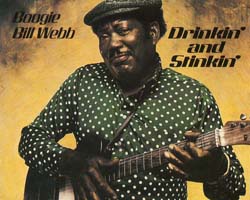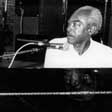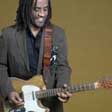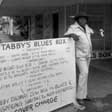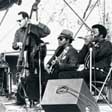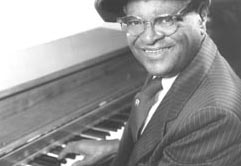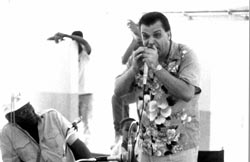From Rural to Urban, From Acoustic to Amplified: the Blues in Louisiana
By Ben Sandmel
At this writing, in 2013, blues music is flourishing in Louisiana, ranging from deep folk-rooted styles to cutting-edge interpretations that reflect a wealth of eclectic influences. The northeastern parishes are home to a rough-edged, rural style similar to that of the neighboring Mississippi Delta. This sound can also be heard in field recordings from the southeastern Florida parishes (so named because they were once part of the state of Florida) and the north-central pine hills around Ruston. In New Orleans, the blues thrives on its own—in urbane renditions and in unadorned rural performances alike—and it also appears in other forms, profoundly influencing both old-time jazz and classic rhythm-and-blues. Baton Rouge boasts the state's most concentrated blues scene, with an active club circuit, and an impressive circle of both distinguished down-home veterans and modern young blues artists. Out on Louisiana's southwestern prairies, blues is a major component in the French/Afro-Caribbean hybrid genre known as zydeco, and it has also influenced Cajun music. This area also has produced such notable blues artists as guitarist Lonnie Brooks, who is now based in Chicago, the late Lonesome Sundown (Cornelius Green), the acclaimed Lafayette-based guitarist and singer Paul "Little Buck" Sinegal.1 And Shreveport, in Louisiana's northwestern corner, has long been a center of considerable blues activity, in terms of both commercial recording and live performance.
Before discussing these regional and stylistic aspects of Louisiana blues, a few basic premises should be established. To begin, much of the musical terminology found here (and in similar articles elsewhere) is rarely used by blues musicians themselves, who might well find it irrelevant. Such jargon has evolved, rather, as a useful way to categorize material and standardize research, as well as for marketing. When superimposed on active music traditions, it does not always fit neatly. In addition, meanings and inferences change continually with time. Such limits should be recognized.
Next, the on-going folkloric debate over authenticity is certainly relevant here. At this point in time it seems safe to state that no living blues artists have learned through oral tradition only, with absolutely no exposure to mass media. Except in rare cases—such as the pre-War blues genre known as work songs, for instance—the influence of recordings, radio, and the internet on Louisiana blues is an inevitable, important factor. One musician whom I interviewed in the field in 1989 illustrated this point in a particularly striking way: guitarist Henry Dorsey, a life-long resident of Rayville, in Richland Parish, told me that he learned solely by listening to records by Lightnin' Hopkins, a musician from southeast Texas who had no connections to Dorsey's community. Dorsey mimics Hopkins' records perfectly in a very soulful and convincing manner. Although then in his late fifties (and still performing today, with his longtime partner Wayne "Tookie" Collum) Dorsey claimed to have never traveled outside of this isolated rural area, nor ever heard, let alone been taught by, any other guitarists.
But the folkloric process at times includes contradictory narratives, as exemplified by a notably different tale of his musical roots that Henry Dorsey related to folklorist Susan Roach. After a long day's work the Dorsey family would often relax in the evening by playing music together. Dorsey's uncle played guitar. Dorsey's father played the harp (harmonica), and is thought to have learned this instrument from Dorsey's grandfather, who was also a fiddler. Dorsey's mother sang the blues. These family members performed on occasion at suppers and parties and Henry would go with them, although he never played.
At 15 Dorsey got his first guitar and learned the instrument's basics from his uncle. Dorsey also picked up many songs both by listening to the radio and playing 78 r.p.m. records that his family would purchase for twenty-five cents in Rayville: "I think we had over a 100 of Lightnin' Hopkins, Muddy Waters, Elmore James" (Dorsey 1997). (Roach 2013).
Virtually every Louisiana blues player whom I have interviewed in the field since 1983 acknowledges some debt to records. In fact, most field recordings from the 1980s on, if not earlier, are derivative renditions of post-World War II recorded blues hits by the likes of Jimmy Reed, Muddy Waters, and B. B. King. Older material of the pre-World War II vintage was tantalizingly hard to find in the 1980s and has probably vanished altogether by now. Faint traces of archaic styles may yet remain, though, and perhaps can be documented through further fieldwork.
Blues and Gospel Music
In addition to music, field research often results in the documentation of rich, expressive oral histories, which reveal prevailing beliefs and attitudes towards such music and are fascinating in their own right as verbal performances. One common theme is the sharp division between blues and gospel music. Many gospel musicians denounce blues as "the Devil's music," while some blues artists play the blues under a cloud of conflict and guilt, eventually renouncing it in favor of gospel. "To me," commented Rev. Elijah Ott, of New Orleans, in an 1984 interview, "there's two kinds of music—you got one for God, and one for the Devil." During the same interview, blues guitarist Zack Carter concurred, "Blues music is the Devil's music because if you listen at the right kind of music, blues music will give you all kind of thoughts in your mind. . . . If you be listenin' at blues music, folks'll be walkin' with a stick, and the right kind of music, you'll throw it down. Church music the same way." In 1984, Susan Roach interviewed a slide-guitar player named Mitchell Shelton, in Claiborne Parish, who offered these observations: "I don't think it's any harm in playing them, [the blues.] God likes music himself. My suggestion is this—God likes all the music; it's just what you use it for."
Guitarist Othineil Bridges, Sr., of Hammond, spent years as a professional blues musician, performing under the stage name of Hideaway Slim. One of the more talented musicians encountered in Louisiana fieldwork, Bridges was once poised on the brink of a major career breakthrough, but passed up the opportunity because of his religious convictions. At the time of the interview in 1984 he was playing solely in church:
It have been people come to my house to sponsor me, to make records, to go to New York. When I was playing in New Orleans, before I left there, when I couldn't play nothin' like I did when I quit playin', and also since I've been here, I've had offers. But I turned them all down on account of my training. I'd go to the fence, but I never would cross it. In a manner of speaking, I'd run right up to the fence of opportunity, success, whatever you'd call it, but I guess it was just something that my mother taught me, that it wasn't right, that put a fear in me. You got to be out there all the way; you got to have your mind on what you're doing; you can't be half-cocked, thinkin' "maybe I shouldn't go," 'cause you're climbin' a slimy pole—you're not going to make it. So if you don't go all the way, you might as well do like I did and let it alone, stay home, and don't worry about it. I don't have any regrets, either; I really don't. It's times it's crossed my mind that I could have had a Cadillac or owned a home, but my mother's teaching was just enough to keep me from crossing that fence. I couldn't have did any worse. I don't guess I'd be in any worse shape than I am now—I say that, but I think I'd do the same thing over again. I wouldn't go. I could have had a better way of living, I guess, a big home, but my physical life, how would it have been? Music will age you.
At the same time, however, Bridges did not disapprove of others playing blues: "I love music. I love to hear someone that can take a guitar and play it. When someone can make it say something, on this side of the fence or the other side, don't make no difference, as long as the guy knows what he's doing. I'll listen all night. I love guitar music—simple as that."
Daniel Ruffin, a black country and western guitarist from Independence (Tangipahoa Parish), expressed a similarly philosophical attitude:
I really didn't get into blues because my father was a preacher, and to him it was a wicked thing. I'll tell you about blues and gospel: everybody have they tastes in music. Now they got your gospel, country western, blues, they got your hillbilly, bluegrass; other words, they got all type of music. Well now all that music, ain't everybody got to like it. So this here the reason they have all this type of music. Now me, I love Gospel, I love blues, I love country, but I love country more. . . .
I was brought up in church, but when you young, long as you at home, you gonna try to do what mother and father say, but when you get out, you gonna lean out a little. Any young man gonna lean out. He might not stay out there too long, but he gonna try some of the world and see what it's like. . . .
I sing gospel in church; I separate it; I honor the church. If I'm at home I'm liable to pick up and play any old thing to get my music where I want it. I might sing some gospel at a bar, too, 'cause it's in me. . . .
My wife, she not too crazy about country, but she'd listen at it 'cause she know that what I do. She thinks it's blues; she thinks it's wrong by singin' it; she's religious. I told her, "All music sound alike; it's people change the music. A 'C' chord on a guitar is the same chord in a church on a guitar. They changed it to make money out of it. It's people that change. The music is the same.
Reverend Burnell Offlee, of the Baton Rouge gospel quintet the Zion Travelers, also took a tolerant view in an interview from 1985:
If you can get a direct message from a song, it really does something. Take these blues singers. They sing from direct experience, and those blues that they sing, they got the experience, they been through it, they know. Like some of 'em say "If I don't find my baby, I'm gonna jump overboard and drown." Some people might do that; if they don't find that woman, they'll go up on a bridge, jump off, and drown. But blues and spiritual music is just about the same, just different words. I don't see it as evil, 'cause you get a message out of it.2
Blues Roots
The following discussion of Louisiana blues is a chronological and regional overview of the state's various styles. The focus is both on those musicians who are still performing in 2013, and important historical figures. Obviously this roster has changed significantly since this article was first written in 1989. Let's begin with such roots of the blues as ante-bellum music. In the mid 1980s, there were still a few traces of a cappella antebellum work songs and field hollers.
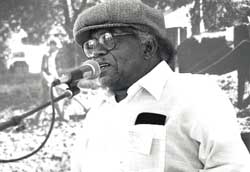
It is unclear if this genre still exists at all today Due largely to budget cuts, very little state-funded field research has been conducted on the blues since the early 1990s. The ante-bellum genre contains several core several core aspects of African-American folk music which also remain present in many black contemporary hits—including, the use of bent, slurred, and elongated notes (technically referred to as melisma), and improvised lyrics which provide social commentary that may include social commentary. These elements are common in rap music, for instance, and are also an integral part of the long-standing West African griot tradition which still exists today. In Louisiana, the last known remaining practitioner of work songs was Clifford Blake of Natchitoches, whose songs and stories related to calling time on the cotton press are presented on Louisiana Folklife Recording Series 001, Cornbread for Your Husband, Biscuits for Your Man released in 1980 which is available on CD from the Louisiana Folklife Center.
With its roots in the style and social expression of the work-song genre, the blues evolved during the late 19th century. Drawing on New World descendants of such African stringed instruments as the halom and kova3, early rural blues were sometimes played on home-made one-string instruments such as the "diddley bow," or cigar-box guitar. Such instruments were often strung with wire from screen-doors or brooms and might be played by sliding from one note to the next with a bottle-neck, bone, or knife blade.
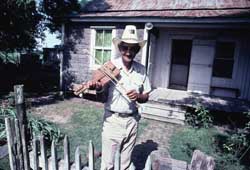
Many older rural musicians in Louisiana recall starting out with such one-string instruments. A milestone in blues evolution was reached in the mid-1890s when guitars became widely available through mail-order catalogues. This coincided with the emergence and growth of the recording industry, and the manufacture and sale of recorded music. The advent of radio broadcasting in 1920 exponentially disseminated the sale of recordings, including the huge commercial success of Mamie Smith's "Crazy Blues."
Rural blues tended-and still does tend-towards variable song structures, in which unaccompanied artists change chords at will. Since they are playing solo, there are no concerns about throwing off a band. In urban blues, a more standardized approach has long characterized songs that work on eight-bar, twelve-bar and sixteen bar forms. The most common of these is the twelve-bar form, with its A-A-B verse pattern in which a statement is made, repeated, and then the thought is resolved:
I used to search all night for you, darlin,'
But my search would always be in vain
I used to search all night for you, darlin'
But my search would always be in vain
I knew all along now, baby, that you was hid out with your other man.
("The Things I Used to Do" Eddie Jones—SONY ATV Publishing, BMI)
This pattern remains popular today throughout Louisiana, as do varying degrees of adherence to it. Some contemporary rural interpreters, such as Little Freddie King or Guitar Lightning Lee, will play the standard twelve bars on certain verses, yet also opt for, say, eleven or thirteen bars—or fragments thereof—on other verses. The choice is made as their mood dictates, and often varies within the same song. Other blues players simply disregard formal structures altogether, making music that may seem anarchic at first listening, but which is actually brilliant in its improvisation. This practice is known as "jumping time," and when it is done with a band then everyone must make the same mistakes together, in effect playing it wrong to play it right. In terms of contemporary Louisiana blues artists, the bands of Little Freddie King and Guitar Lightnin' are both adept at this.
One of the best known Louisiana blues artist to perform in this mode was the late guitarist Robert Pete Williams (1914-1980), who was first recorded in the Angola State Penitentiary in 1958, by folklorist Dr. Harry Oster of Louisiana State University. Williams went on to tour and record actively, winning the admiration of such rock performers as Bob Dylan, and the Rolling Stones. New Orleans guitarist Boogie Bill Webb also performed some numbers with a similarly quirky, rural approach which, at first, seemed quite baffling if listened to with expectations of conventional form. Some Cajun and zydeco musicians also bend the confines of verse structure to make lyrics fit. The late Nathan Abshire and Boozoo Chavis, respectively, were two notable examples, as, on occasion was the band The Hackberry Ramblers. The practice persists at this writing.
Pre-War Blues
This continuum of approaches to song-structure remains constant while blues styles and trends come and go. Into the 1990s various styles which evolved early in the century could still be heard in Louisiana. Such older styles are usually referred to as "pre-War," meaning World War II; this term is both a convenient chronological division, and a fairly accurate measurement of stylistic development. Until his death in 1995, guitarist Jesse Thomas, of Shreveport, was the state's most notable surviving pre-War blues artist. Thomas made some commercial records in the 1920s, such as "Blue Goose Blues," that are regarded today as country-blues guitar classics. In his later years, however, Thomas emphasized much more modern material in order to find work at nightclubs where patrons preferred contemporary music.
Boogie Bill Webb (1924-1990) also played in a wide range of styles, including R&B/soul music material from the 1960s such as Jr. Walker's "Cleo's Back" and 1980s hits including Z.Z. Hill's "Downhome Blues." Webb was especially notable, however, for preserving the 1920s repertoire of his mentor, Tommy Johnson. Johnson (1896-1956) was one of Mississippi's most accomplished rural stylists, as evidenced by such original songs as "Big Road Blues" and "Canned Heat Blues," which he recorded in 1928. Johnson taught these songs to Webb, who played them quite faithfully.4
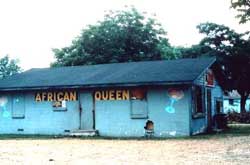
Various pre-War styles have also been recorded during fieldwork in the Delta Parishes. In 1987 I interviewed a guitarist named Frank Roach in Waterproof (Tensas Parish). Roach played fragments of "Gonna Move to Kansas City," which was a big hit for Jim Jackson in the 1920s (and should not be confused with the 1959 rhythm and blues hit "Kansas City," by Wilbert Harrison). Roach, then in his seventies, also recalled hearing people play the quills or pan-pipes (technically also known as the syrinx) back in his childhood. These wind instruments just are one reflection of the African retentions that are so significant in the African-American music of Louisiana.
In nearby Tallulah (Madison Parish), in 1986, I recorded an excellent guitarist and singer, Rufus "Rip" Wimberly (1926-2012). Wimberly related that he had grown up in rural Claiborne Parish, and besides hearing blues, was also exposed to the rural stringband tradition, that was shared by blacks and whites alike; Wimberley's father, for instance, played fiddle, mandolin, and guitar. Wimberly played several songs of this vintage, including a country tune, a ragtime/"hokum" number, Jim Jackson's "Kansas City," and another blues hit, "Step It Up and Go." He was also a master of the Delta style, singing in a haunting, understated falsetto.
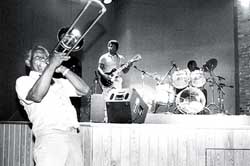
Like Jesse Thomas, Wimberly was a working musician, and his public performances focused on renditions of 1950s and 60s blues hits by such artists as B.B. King and John Lee Hooker. He was accompanied by younger musicians who were not always sympathetic to his old-fashioned approach to structure. This created a conflict, whereby Wimberly would play an irregular pattern, jumping time, while the band tried to strait-jacket him within the standard twelve-bar structure. Sympathetic accompanists would instead have deferred to Wimberley by "jumping time" in unison. Such situations are typical within the dual pressures of a musical generation gap, and commercial nightclub economics; unfortunately, they severely discourage the survival of, and respect for, older styles of blues. As a final note on pre-War blues, a wealth of such material (mostly urban in nature) can be found in some of the lyrics, melodies, solo techniques, and rhythms of the New Orleans traditional jazz scene. Twelve-bar blues songs, for example, were one staple of the repertoires of Louis Armstrong, Sidney Bechet, and Jelly Roll Morton, et al, and remain so today among the A-list players at traditional-jazz venues in New Orleans such as Preservation Hall and the Palm Court Café.
Baton Rouge Blues
The most dramatic difference between pre- and post-War blues is that the latter is characterized by the use of amplified and electric instruments and bass/drums accompaniment. In Baton Rouge, guitar electrification produced a "country in the city" synthesis, as essentially rural material was played in a blues-band format. Many Baton Rouge electric blues guitarists, including Lightnin' Slim, Lazy Lester, Slim Harpo, Silas Hogan, and Arthur "Guitar" Kelley, were recorded in the 1950s and 1960s at a small studio in Crowley, Louisiana, where the owner, Jay Miller, also served as the producer. Miller was a controversial figure, like many record-business entrepreneurs, and all the more so in his case because he released some virulently racist rants on a label called Rebel. Nonetheless, even with such overt prejudice, Miller still produced blues records with extraordinary atmosphere, soul, and vitality, which are now regarded as classics. Perhaps the best known of these is Slim Harpo's "Baby, Scratch My Back," which became a national pop-chart hit in 1966. Other significant hits included Harpo's "Rainin' in My Heart," and Lightnin' Slim's "Rooster Blues." Since Miller leased his productions to the Excello label in Nashville, his concept became known in blues circles as "the Excello sound," which was thought to have emanated from Tennessee so that its Louisiana origins often went unrecognized.
Afro-French Blues
Just west of Baton Rouge and ranging westward to the Texas border and beyond, Louisiana's Cajun/Creole parishes are the center of activity for zydeco. With Creole and Cajun folk tunes and Afro-Caribbean rhythms as its core, and the accordion as its main instrument, the creolized genre that is zydeco can also include elements of rock, country, soul music, rap, and hip-hop, and always incorporates a strong blues influence. ("Creole" is a highly controversial word in south Louisiana, involving a complex, biased web of racial and socioeconomic identities. In this article "Creole" refers to the members of southwestern Louisiana's black community who speak French or have ancestors who did. This definition of "Creole" is a subjective usage that neither endorses nor dismisses other interpretations. The debate is apt to rage on without consensus.) The late Clifton Chenier, the first Creole musician widely known for playing blues on the accordion, was also a pioneer in bringing zydeco out of the Creole community and introducing it to the world at large. He did so, starting in the late 1940s, by creating zydeco arrangements for then-current blues and rhythm-and-blues hits by the likes of Fats Domino, B. B. King, Ray Charles, Louis Jordan, and others. In a 1983 interview, Chenier explained the role of blues lyrics in his music:
Now you take a good friend of mine, B. B. King. I been knowin' B. B. since 1947, and—pay attention—every record he make is about something that happened to somebody, a true story. What you gettin' these days? Nothin', just noise and jumpin' up and down; in my book, it don't show me nothin'. I like to hear something with ideas, you know, give me an idea of something. Maybe your wife done walked off and left-why she left you? That's the point, why she left you? You did something you ain't had no business, or she wasn't right.
A lot of people don't understand that. They make a little record and go on with it, but they don't tell a story, and you know why? They ain't got no story for you 'cause they ain't been through nothin'. You got to go through the mill for that. Now you catch fellas like me, fellows like B. B. King, Big Joe Turner, Fats Domino, them fellas can tell you something. That's right, they can sit down and tell you something 'cause they've been out there. And pay attention now, watch this: anybody who comes out with a hit record, they may jump on disco, but they start with the blues.
. . . Back in the '50s and '60s there were musicians. Chuck Berry, Little Walter, Muddy Waters, Willie Dixon—they got a story behind every record they made. That kind of music, when you're sitting down at home, you're lonesome, thinking about some of your old fiends from way back, you put that on and it's telling you something. You put on one of them disco records, what you got? Just a beat; that's all.
Today, most zydeco bandleaders play some blues-based materials, except for those who are completely immersed in rap/hip-hop and contemporary R&B (and those genres have blues roots, albeit several generations removed.) There may be variations in zydeco musicians' approaches to standard musical structure; on the Rounder album Zydeco Live! (1989), for instance, John Delafose presents an interpretation of Guitar Slim's 1950s hit, "I Done Got Over," which has a quite unpredictable, time-jumping arrangement. With the confluence of rap/hip-hop influence and rural stomps, a significant number of zydeco songs are based on unchanging one-chord vamps; while this can grow monotonous for listeners, especially if there are also no solos, dancers often find it both hypnotic and energizing. The late Boozoo Chavis, one of the zydeco scene's most popular bandleader, until his death in 2001, had a particular penchant for such material, in marked contrast to Clifton Chenier, who favored recognized songs with standardized structure.
Some zydeco artists play and focus on so much blues, rhythm-and-blues, funk, or rap/hip-hop, that the Creole base of their repertoire is often obscured. Even so they play the accordion and sing, at least partially, in French, thus establishing their zydeco bona fides. At the other end of the spectrum, zydeco accordionist Willis Prudhomme, from the small town of Oberlin in rural Allen Parish, claims no influence from either zydeco or blues; his role models, rather, were Cajun accordionists such as Iry LeJeune and Nathan Abshire. Both LeJeune and Abshire sang with the same raw, emotional intensity that distinguishes the best blues performances, underscoring the importance of blues as one component of Cajun music.
Swamp Pop
The Creole/Cajun parishes are also home to another important blues-related hybrid genre—swamp pop. This style is less easily classified as distinctively Louisianan, since it is not earmarked by the use of the accordion, frottoir (rub-board), or French lyrics, for the most, although there are some notable exceptions, such as Belton Richard's "Une Autre Soir Ennui." In terms of structure, swamp pop uses many 1950s and 1960s rock and roll/rhythm and blues formats and chord patterns that are played the same way around the nation. In Louisiana it is subtly set apart by an intangibly plaintive, soulful approach, particularly in terms of vocals. In terms of national success, the most prominent swamp-pop hit has been Phil Phillips' "Sea of Love," in 1959. Two of the best known regional swamp-pop hits are "Mathilda" by Cookie and the Cupcakes from Lake Charles, and "Irene," by Guitar Gable (Gabriel Perrodin) from Opelousas. Today there is an active swamp pop scene in throughout South Louisiana, with notable artists including Johnny Allen, Warren Storm, Tommy McLain, Don Rich, Sonny Bourg, Lil' Band O' Gold, and the Creole String Beans.
Swamp pop has close connections to Louisiana's most commercially successful blues-based genre, New Orleans rhythm and blues—as evidenced by the prominence of Fats Domino songs in the collective swamp-pop repertoire. "R&B" in general is a blend of traditional blues with various mainstream influences. R&B differs from traditional blues in that R&B lyrics tend to be written with calculating commercial intent, as opposed to ingenuously folk-rooted "floating verses" heard in many blues songs that randomly appear in other blues songs in varying combinations. R&B's instrumental arrangements are likewise more sophisticated, often with written horn arrangements that are not improvised. Folk roots remain evident in R&B's use of melisma, blue notes, call-and-response, and improvisation in terms of vocal interpretation and instrumental solos. New Orleans rhythm and blues also absorbed such Afro-Caribbean touches as three-count tresillo rhythms often associated specifically with Cuba—as played by such R&B artists as the late Professor Longhair, and decades before, by the pioneering New Orleans jazz pianist Jelly Roll Morton.
New Orleans Blues
As with any arbitrary categories, the borders between blues and rhythm-and-blues are hazy, arbitrary, and subjective, and many of New Orleans' most noted artists—such as Fats Domino, Irma Thomas, Clarence "Frogman" Henry, and the late Tommy Ridgley, Snooks Eaglin, and Smiley Lewis—have worked in both stylistic camps. It is unlikely that they made any distinction between the two styles. Lewis, although rarely recognized as such, may well have been one of the greatest blues singers of all time; his stunning performances—including "Big Mamou," "Shame, Shame, Shame," "One Night of Sin," and "I Hear You Knocking"—were enhanced by the deft arrangements of the great band of Dave Bartholomew. Bartholomew played the same role, with infinitely more commercial success, for Fats Domino, and also recorded hits under his own name, most notably the "The Monkey Speaks His Mind." A more rural R&B stylist named Guitar Slim (Eddie Jones) was based in New Orleans during the peak of his career, recording with and influencing such local blues and rhythm-and-blues artists as the great songwriter Earl King. Renditions of Guitar Slim's hits, most notably, "The Things I Used to Do," appeared constantly in the course of fieldwork throughout the state during the 1980s and '90s, and the song is still performed at such New Orleans nightclubs as Guitar Joe's House of Blues. In addition, Guitar Slim's "I Done Got Over" is firmly entrenched in zydeco's public domain. Stylistically, however, the music of Guitar Slim is primarily linked with his native Mississippi.
Today, New Orleans' leading modern blues guitarist is Walter "Wolfman" Washington, while Little Freddie King and Guitar Lightning Lee typify an older rural approach. Walter Washington has an urban approach that deftly combines gritty funk and dapper suavité. While he accompanied such great New Orleans singers as his cousin Ernie K-Doe, as well as Lee Dorsey, Washington's eclectic style is not strongly characterized by a local identity:
I haven't really listened to too many New Orleans musicians. I most listened to musicians that was away from here, like B. B. King, Bobby "Blue" Bland, Tyrone Davis, those cats. I like New Orleans' style, don't get me wrong, but it's only limited to a certain thing, and I like to stretch out; I like a variety of music. You never know what might catch on. . . .
At the other end of the spectrum, New Orleans is, at this writing, still home to such rural-sounding, unabashedly time-jumping blues guitarists as Little Freddie King, and Guitar Lightning Lee. Another notable figure in this vein, sadly no longer with us, was the archaic-styled blues harmonicist Brother Percy Randolph (1914 - 1991). One of the great experiences that living in New Orleans offered in the 1980s was an encounter with Randolph as he rode the city's streets on his bicycle, playing through a home-made speaker system mounted on his handlebars. An equally memorable (although far more dapper) figure was the late pianist and sophisticated comedic lyricist Cousin Joe (Pleasant Joseph), best known for such original, witty gems as "Every Thing That's Made of Wood Was Once a Tree."
Shreveport Blues
At this writing, the blues scene in Louisiana's second largest city, Shreveport is considered by many well-informed observers to be in a somewhat dormant phase, at least temporarily. It would seem likely, though, that a city of this size, with a rich blues history dating back to the great artist Leadbelly (Huddie Ledbetter) is bound to experience a blues resurgence at some point. Although Ledbetter performed in Shreveport as a teenager, and wrote a song about the city's famed Fannin Street, he rarely if ever played there as an adult. Surveying the contemporary scene, singer Dorothy Prime has relocated to Homer, in Claiborne Parish, where she operates a club called Prime Time. Jewel Records, a Shreveport company that released a wealth of fine blues material on several labels that it owned, and which was active when this article was first written, has ceased operations and sold its entire catalogue of recordings. In 2013, blues activity in north Louisiana appears to be stronger in Homer, Monroe, and environs.
This overview would not be complete without discussing Louisiana's white blues interpreters and revivalists. The authenticity issue arises here, of course, since relatively few young white musicians were raised in the direct midst of traditional black culture. At the same time it can certainly be argued that discussing white musicians separately is a needless, biased, and perhaps absurd contrivance which ignores the fact that many white musicians have absorbed the blues on an organic level—and that, an ugly history of racism notwithstanding, there is significant cultural interaction between blacks and whites in Louisiana. This debate is apt to remain unresolved with strong opinions on both sides. I perceive the criteria of authenticity as whether or not a white artist can create a convincing personal style as opposed to mere mimicry, most significantly in terms of singing. White blues musicians who try to affect an African-American accent, or impersonate specific African-American artists are, in my subjective view, quite distinct from such white Louisianans as Dr. John, and Marcia Ball (of Vinton, in Calcasieu Parish), to cite just two examples, who sound thoroughly natural. Both are highly respected by black musicians and regarded as peers. Among working musicians the criteria is simple—either someone can play and sing, or they can't.
Another factor to consider is that comparatively few young black musicians are interested in playing blues today, especially the more traditional styles which are often disdained as old-fashioned. This aesthetic, which has been prevalent since the 1970s, has tended to relegate the role of blues accompaniment and de facto preservation to enthusiastic white musicians both from within and beyond Louisiana regional culture—not entirely, but to a significant degree; certainly there are some notable exceptions. Moreover, young black audiences under the age of 50, roughly, tend to show comparatively little interest in listening to or supporting blues—again not entirely, but to a significant degree. Without white audiences, in fact, many contemporary blues artists in Louisiana and elsewhere would have great difficulty in making a living. As the late Boogie Bill Webb commented, "If some white boy don't come up with the blues, our blues going to go dead. I'm telling you that's the onliest thing that can save it."5 Cajun music, zydeco, and traditional jazz were all deemed archaic and irrelevant, and faced near extinction in the 1970s, until a cultural resurgence brought new enthusiasm and recognition within their communities of origin. Thus far, unfortunately, there has been no comparable resurgence of blues among younger African-Americans.
Some white Louisiana blues singers are accomplished vocalists, such as New Orleans guitarist John Mooney, who learned directly from the great guitarist Son House; guitarist/pianist Kenny Bill Stinson, of West Monroe, who is equally adept at blues and country music; New Orleans vocal/harmonicist J. Monque'd, Shreveport's Buddy Flett and the aforementioned Dr. John and Marcia Ball.
White involvement in the blues has often been accompanied by virulent racism and extreme financial exploitation of black music and black musicians, specifically the theft of songwriting and music publishing royalties, and the diversion of artists' sales income due to copies, aka "cover versions," of songs by black artists. Much of this sordid activity can be attributed to unscrupulous record companies, managers, promoters, and music publishers; it's an unfortunate and unfair fact that musicians, both black and white, occupy the bottom rung of power in the music industry. Broader prevailing attitudes of ethnocentricity towards minority culture are also a significant discriminatory factor.
Conclusion
The year 2013 finds Louisiana's blues engulfed in change on one hand, yet also quite unchanged and constant. New technology, new venues, new audiences, new stars, and new material all give the genre an evolving edge that's essential to its continued growth. At the same time, the blues has retained its role in declaring, commenting on, and reinforcing community values and attitudes. It still plays an important role, too, in peer group bonding. The grassroots blues-club circuit continues to provide training ground for aspiring blues musicians, who learn in large part, by playing decades-old material. Such songs continue to deal with basic, timeless human emotions, and they remain vital due to the energy and enthusiasm of what musicians call a "groove"—a term that is obsolete in one sense, since it refers to phonograph records, yet still resonates in terms of vitality and soulfulness. Venues come and go, but there is always some place to play. The blues is still recreational music, which exists mainly for dancing and emotional release. Those who merely listen to it in a passive, analytical way may miss this point, even though the blues does offer ample lyrical and instrumental substance.
In closing, Louisiana remains ripe for blues fieldwork in every section, of the state. Hopefully, this brief overview will encourage such work and, in some small way, encourage cultural continuity for this powerful cultural expression of Louisiana's black communities. And should prospective researchers require a working definition of the blues, guitarist Gus "Gatemouth" Cavalier, of West Feliciana Parish, offered these succinct remarks:
I go down low as you can go—I mean the lowest, buttonhole, the low-down blues. And it gets good to me, I get happy. These blues'll getcha, you know. Blues means like when you get up sometime, you walk through the house, the floor don't feel right. You put your left slipper on your right foot and your right one on the left one, and behind that sometimes you stick your foot in 'em backwards! That's the blues, that's what the blues is all about.
Bibliography
Bernard, Shane. 1996. Swamp Pop: Cajun and Creole Rhythm & Blues. Jackson, MS, University Press of Mississippi.
Berry, Jason, Jonathan Foose, and Tad Jones. 2009. Up From The Cradle of Jazz: New Orleans Music Since World II. Lafayette, LA, University of Louisiana at Lafayette Press.
Gould, Philip. 1992. Cajun Music and Zydeco, photographs by Philip Gould, introduction by Barry Jean Ancelet. Baton Rouge, LA, LSU Press. .
Lornell, Kip, and Tracey E. W. Laird, eds. 2008. Shreveport Sounds in Black and White. Jackson, MS, U Press of Mississippi. .
Ramsey, Frederic, Jr., 2000. Been Here and Gone. Athens, GA, University of Georgia Press/.Brown Thrasher Books.
Roach, Susan. 2013. &dquo;Po'Henry and Tookie: Delta Blues Duo&dquo; Delta Pieces: Northeast Louisiana Folklife. Web. http://www.louisianafolklife.org/LT/Articles_Essays/DeltaHandT.html.
Sandmel, Ben (text), and Rick Oliver (photos). 1999. Zydeco! Jackson, MS, University Press of Mississippi. .
Tisserand, Michael. 1998. The Kingdom of Zydeco. New York, Arcade. .
Wolfe, Charles, and Kip Lornell. 1992. The Life and Legend of Leadbelly. New York, DaCapo. .
Interviews
Bridges, Othineil, Sr. 1984. Interview by the author. Hammond, Louisiana, March 25. .
Dorsey, Henry and Wayne &dquo;Tookie&dquo; Collum. 1989. Interview by the author. Rayville, Louisiana. August 20. .
Dorsey, Henry. 1997. Personal interview by Susan Roach. Rayville, Louisiana. 6 July. .
Mitchell, Shelton. 1984. Interview by Susan Roach. Claiborne Parish, Louisiana. .
Offlee, Rev. Burnell.1985. Interview by the author. Baton Rouge, Louisiana. Spring. .
Ott, E.L., Zack Carter and the Ott Family. 1984. Interview by the author. Osyka, Mississippi. April 7.
Roach, Frank. 1987. Interview by the author, Waterproof, Louisiana. .
Wimberly, Rip. 1986. Interview by the author. Tallulah, LA, August 21. .
Notes
1. An alternate spelling of this surname, Senegal, is frequently seen in print, and may in fact be correct in this instance.
2. In 1987, Susan Roach and I recorded Louis Dunn and Donald Tibbs at such a gathering in Claiborne Parish.
3. The oral histories and musical performances are archived in the Louisiana Division of the Arts Folklife Program Collection at the Louisiana State University Library Special Collections in Baton Rouge, where the public is encouraged to consult and enjoy them.
4. Webb's album, Drinkin' and Stinkin' (Volume 005 of the Louisiana Folklife Recording Series/Flying Fish Records FF-506) does not feature much of this material, unfortunately, because the project's original backers did not want to duplicate anything which Webb had previously recorded for several small collectors' labels in Europe. There are, however, several unreleased songs. The master recording of this album is now owned by the Hot Biscuits Recording Company.
5. From the pamphlet &dquo;Everything I'm Telling You Ain't No Lie: Down the Big Road with Boogie Bill Webb,&dquo; by Nicholas R. Spitzer. This pamphlet accompanies Webb's album Drinkin' and Stinkin' (Volume 005 of the Louisiana Folklife Recording Series/Flying Fish Records FF-506). A few copies of it still exist. this album is now owned by the Hot Biscuits Recording Company.


